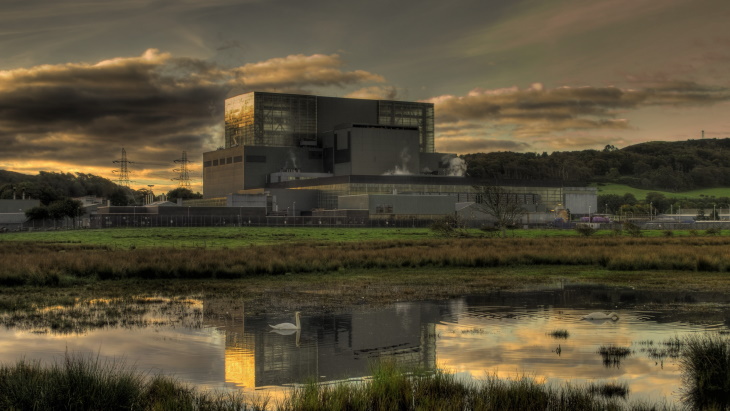The Hunterston B plant in North Ayrshire comprises two 490 MWe advanced gas-cooled reactors (AGRs) - Reactors 3 and 4. Reactor 3 came online for the first time in February 1976, was initially expected to run for 25 years but had its generating lifespan increased to more than 45 years. It was taken offline in November 2021. The plant's other unit, Reactor 4, started up in March 1977 and was shut down in January 2023.
EDF Energy completed an Environmental Impact Assessment (EIA) of the decommissioning works for the Hunterston B plant. This EIA, in the form of an Environmental Statement, was submitted to the Office for Nuclear Regulation (ONR) on 1 December 2023 as part of an application for consent under the Nuclear Reactors (Environmental Impact Assessment for Decommissioning) Regulations 1999 (as amended). This application requires approval from ONR before decommissioning works can proceed at the site.
The EIA identified two significant impacts during decommissioning: temporary adverse visual impact of dismantling activities of the power plant for local residents and the socioeconomic effects on the regional employment market with workers at Hunterston B released from their roles during phases of the project.
ONR has now said it is satisfied that the environmental statement proposes adequate mitigation measures to address these factors and considers the statement "to be complete, of the right quality, and in line with relevant good practices".
"We will continue to effectively and efficiently regulate the Hunterston B site proportionately throughout the entire decommissioning phase to ensure the licensee complies with all applicable legislation to safeguard workers and the public," said Ian Phillips, ONR's Head of Safety Regulation for Decommissioning, Fuel and Waste Sites.
Since the plant shut down, nuclear fuel has been removed from the reactors and transported by rail to Sellafield in Cumbria for storage. The removal of fuel from Reactor 3 began in May 2022 and was completed in September last year. Defuelling of Reactor 4 is expected to be completed in 2025.
After this, the nuclear site licence will transfer from EDF Energy to Nuclear Restoration Services (NRS), a subsidiary of the Nuclear Decommissioning Authority. NRS will decommission the site, which will involve dismantling and demolishing the plant and buildings.
EDF had originally been responsible for total lifetime decommissioning of the seven AGR plants, which comprise Torness and Hunterston B in Scotland, Dungeness B in Kent, Hartlepool in Teesside, Heysham 1 and 2 in Lancashire and Hinkley Point B in Somerset. All these plants are scheduled to reach the end of their operational lives this decade.
However, in June 2021, the UK government and EDF agreed improved arrangements to safely and efficiently decommission the AGRs. Under the agreement, EDF will aim to shorten the time it takes to safely remove the fuel from the plants as they come offline, before working closely with the NDA to transfer ownership of the stations to the NDA.
Three of the seven AGR plants are currently in the defueling stage: Hunterston B, Hinkley Point B and Dungeness B. Four AGR plants are still in operation. Heysham 1 and Hartlepool are currently expected to operate until March 2026. Heysham 2 and Torness are currently due to generate until March 2028. However, EDF said it will "continue to review lifetimes to ensure the four generating stations can continue to support the UK's energy security for as long as it is safe and commercially viable to do so".






_91467.jpg)
_47120.jpg)
_16439.jpg)





